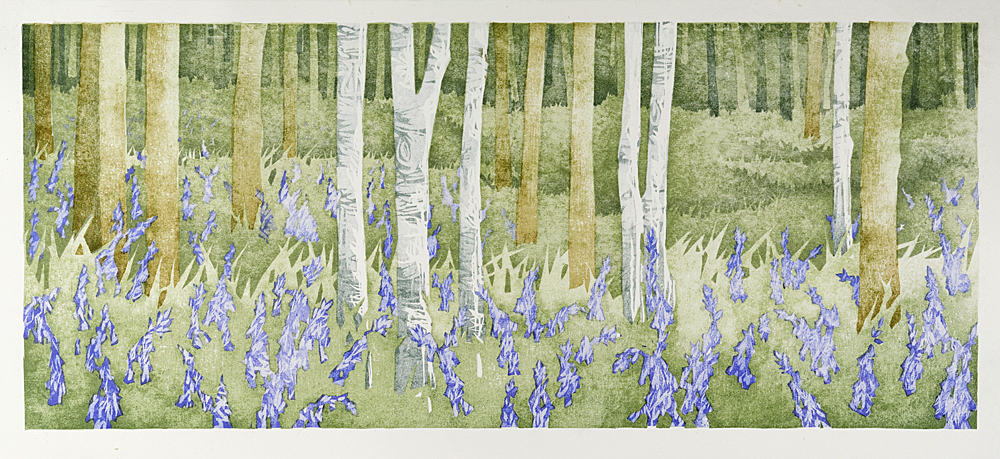I’m usually good at deadlines. I went to the sort of school where handing in essays before their due date wasn’t seen as a revolting bit of crawling by the class swot, it was considered the least you could do. In fact I expect some of my classmates probably had essays written just in case, like newspapers awaiting a royal death. Good training, but it didn’t leave me much time for smoking behind the bike sheds.
That said I very nearly missed the deadline for writing the paper I am shortly due to deliver at the International Mokuhanga Conference in Tokyo. I suspect my subconscious to be at fault here, throwing up an endless list of important alternative occupations. The mere title ‘Educational Practice Report’ is a tough one to see sitting at the top of a blank page and sit it did, right up until a day or so ago.
Backed into a corner I started to write about my teaching. Given that I teach short courses to people who learn for pleasure and my approach is always to be friendly and informal, my ‘educational practice report’ swiftly started to turn into a long blog. This is easy, I thought as I began to expand on why teaching is such a benefit to the working artist. Then I noticed the dog in the garden. We don’t own a dog.
He was big and white and of the sort that Channel Five might excitably describe as ‘killer pit bull’. The only threat he actually posed, when I went out to catch him, was killing me through sheer relief at seeing a human face. We lurched around as he tried to climb into my arms and I tried to read his collar. Finally I shut him into our enclosed passage at the side of the house while I called his owner. The owner couldn’t have cared less. He was on holiday and Ozzie had already escaped once since they left he said, cheerfully promising to send his mum round to collect. Ozzie was by now living up to his rock star namesake; dancing up and down the passageway, making a great deal of noise and peeing lavishly and indiscriminately.
I went back to the writing, waiting for Mum to arrive, only to be called away for a delivery of picture frame moulding in three metre lengths. The delivery man sank into deep gloom when I explained it had to come off the lorry and into the passageway where there was now a large mad dog. The atmosphere became increasingly charged as I caught the baying Ozzie, held the door and asked him to lift the moulding onto a shelf above the piddle. Apparently lifting, along with speaking, was not in the delivery man’s repertoire and I can’t say I blamed him. However, slowly, and in a pregnant silence worthy of Pinter, he obliged and I re-shut the door on Ozzie who wept and howled. The delivery man departed without comment after a long stare, mulling over both my cruelty to animals and to him.
I went back to writing, now feeling raw and distracted. Eventually Mum arrived. Boy, was she cross. Cross at how hard our house was to find, cross that she had to park in the road, cross she’d been called away from her decorating and, above all, cross with Ozzie. I led her to the passageway where Ozzie burst out, a missile of love and delight, to have his bottom well smacked by Mum (by this time I was half expecting her to smack mine). He was ecstatic with the smacking and shouting game so we obligingly chased him around the garden for a while and then she was gone, still grouching.
You’ll be surprised to hear, after all this, that I did complete the paper that day. You can read it here. It celebrates the benefit of teaching for pleasure and, I hope, shows how important my teaching and my students are to me. It’s not much of a serious paper, but then what can you expect from a dog trapper and exploiter of innocent delivery men?
